
Do you have a question about the Lincoln Electric INVERTEC V250-S and is the answer not in the manual?
| Input Frequency | 50/60 Hz |
|---|---|
| Output Current Range | 5-250 A |
| Output Voltage Range | 10 - 30 V |
| Processes | Stick, TIG |
| Power Factor | 0.93 |
| Efficiency | 85% |
| Input Phase | 3 |
| Rated Output | 250 A at 28 V |
| Duty Cycle | 60% at 250 A |
State-specific warnings regarding diesel and gasoline engine exhaust.
Warnings and precautions to prevent electrocution during operation and maintenance.
Risks associated with breathing welding fumes and gases, and ventilation requirements.
Dangers from arc rays, sparks, and spatter, with protective measures.
Precautions for handling compressed gas cylinders to prevent explosions.
Safety guidelines for equipment connected to electrical power sources.
Detailed technical data including input/output ratings and physical dimensions.
Essential safety guidelines to follow before and during installation.
Guidelines for choosing an appropriate operating environment, including location, stacking, and HF precautions.
Instructions for connecting input power, including voltage reconnection and wire/fuse sizes.
Guidance on connecting output cables, remote controls, and using quick disconnect plugs.
Critical safety warnings for operating the welding machine.
Overview of the machine's capabilities, including output control and welding modes.
Explanation of the front panel controls and their functions for operation.
Details on using the machine for SMAW, TIG, and air carbon arc cutting, including settings.
Information on parallel operation, overload protection, thermal shutdown, and arc force settings.
Listing of available optional accessories for the machine.
Details on cable plug kits for quick disconnect connections.
Information on various remote control devices for adjusting output.
Recommended maintenance tasks and their frequency for optimal performance.
Step-by-step procedure for safely discharging input filter capacitors.
Process for conditioning filter capacitors, especially after extended storage.
Visual guide to the location of key components requiring maintenance.
Overview of the machine's function and input power configuration.
Explanation of the pre-charge process and protective circuit functions.
How the main transformer and output rectification control the welding current.
Principles behind Insulated Gate Bipolar Transistor (IGBT) and Pulse Width Modulation (PWM) control.
Instructions on how to effectively use the troubleshooting guide.
Procedures for diagnosing and replacing printed circuit boards.
Troubleshooting steps for various output-related issues such as no output or intermittent output.
Troubleshooting steps for poor welding performance or arc instability.
Detailed tests for diagnosing specific components like transformers, rectifiers, and diodes.
Step-by-step guides for removing and replacing major internal components.
Requirements for retesting the machine after repairs or component replacements.
Schematics detailing internal wiring for different machine codes.
Visual guides and schematics for the control and power printed circuit boards.
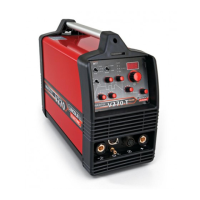
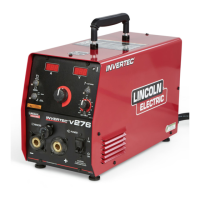
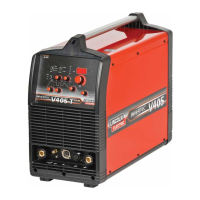
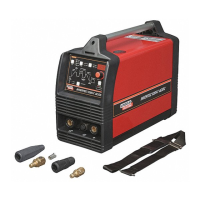
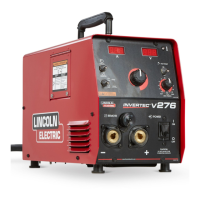
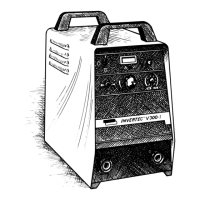
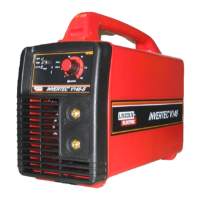
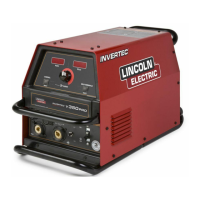
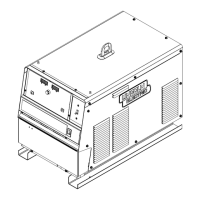
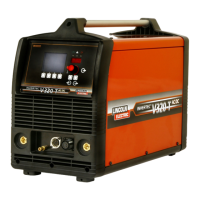
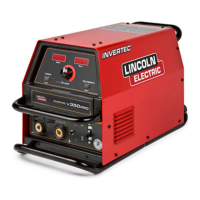

